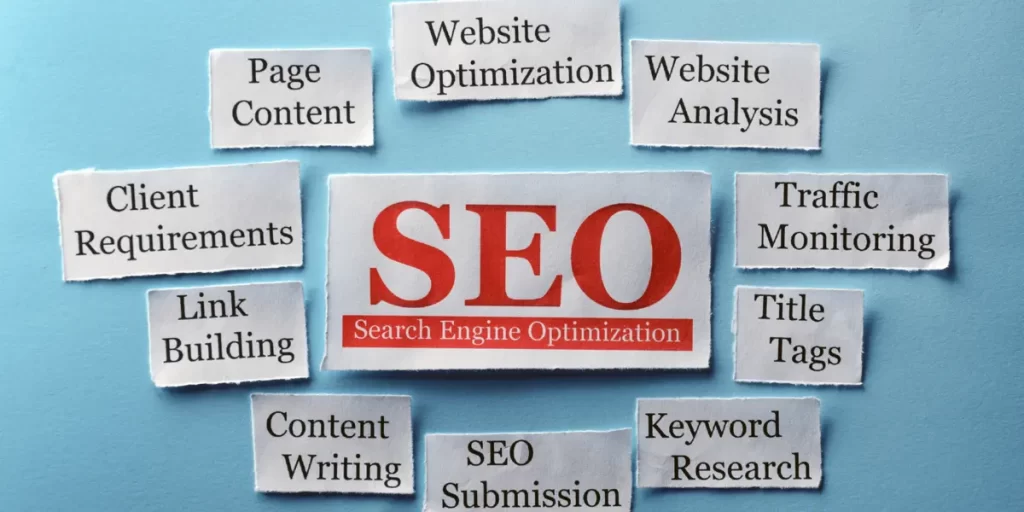Unravel the nuances between lead generation and prospecting to optimize your sales strategies and drive business growth.
Summary
- What Does Lead Generation Mean?
- What is Prospecting?
- How to Explain the Key Differences Between Lead Generation and Prospecting?
- What are the Main Lead Generation Strategies?
- What are the Most Common Prospecting Techniques?
- When to Use Lead Generation vs Prospecting?
- When to Use Lead Generation?
- When to Use Prospecting?
- What are the Advantages of Lead Generation?
- What are the Advantages of Prospecting?
- What Can Be the Possible Challenges of Lead Generation?
- What Can Be the Possible Challenges of Prospecting?
- Conclusion
- Frequently Asked Questions (FAQs)
What Does Lead Generation Mean?
Lead generation is a fundamental aspect of marketing that revolves around identifying and nurturing potential customers or prospects for specific products or services. It encompasses a diverse range of marketing strategies tailored to reach and engage target audiences effectively. The primary goal of lead generation is to generate interest and awareness among potential customers, guiding them through the sales funnel towards conversion. By understanding the needs and preferences of new prospects, businesses can tailor their marketing efforts to attract and capture the attention of potential buyers, ultimately driving growth and revenue. Speaking of marketing efforts, you must not skip our articles where we explain differences on marketing qualified lead vs sales qualified lead and inbound vs outbound leads.
What is Prospecting?
Prospecting marks the initial phase of the sales process, where the focus is on identifying and qualifying potential customers or leads through direct engagement. It involves proactive outreach to new prospects, aiming to establish initial contact and assess their suitability as potential buyers. During the prospecting stage, sales professionals leverage various tactics and channels to connect with target audiences and initiate conversations about their products or services. By identifying the needs and challenges of prospects early on, businesses can tailor their approach to effectively address their requirements and nurture them towards becoming loyal customers.
How to Explain the Key Differences Between Lead Generation and Prospecting?
Focus and Scope
Lead generation encompasses a broader scope, utilizing various marketing strategies to attract and engage a wide range of potential customers or prospects. It aims to create awareness and interest in the company’s products or services across diverse audiences. In contrast, prospecting is more targeted and direct, focusing on identifying and engaging with specific individuals or organizations that fit the ideal customer profile. By narrowing the focus, prospecting helps streamline efforts towards engaging with the most promising leads, optimizing the sales pipeline for better efficiency and results.
Timing in the Sales Funnel
Lead generation typically occurs at the earlier stages of the sales funnel, aiming to generate interest and awareness among potential customers. It focuses on nurturing leads gradually, guiding them through the various stages of consideration and evaluation. Prospecting, on the other hand, involves direct engagement with prospects at a later stage in the sales funnel. It aims to qualify leads quickly and efficiently, identifying those who are most likely to convert into customers and making immediate contact to move them through the pipeline.
Approach and Strategy
Lead generation employs a long-term approach, nurturing leads over time through multiple touchpoints and interactions. It involves creating valuable content, engaging with prospects on social media, and optimizing website traffic to attract and retain potential customers. In contrast, prospecting adopts a more immediate and proactive strategy. It focuses on direct outreach and qualification of leads, utilizing techniques such as cold calling, email outreach, and networking events to identify and connect with potential buyers swiftly. By prioritizing immediate contact and qualification, prospecting accelerates the sales process and enables faster conversions.
Goals and Outcomes
The primary goal of lead generation is to create a pool of potential customers or prospects for ongoing marketing efforts. It aims to build brand awareness, generate interest, and capture the attention of a broader audience. Conversely, the primary objective of prospecting is to identify and convert immediate sales opportunities. It focuses on engaging with high-potential leads and driving them towards making a purchase decision in the shortest possible time. By distinguishing between lead generation and prospecting, companies can develop targeted strategies to create a robust sales pipeline and maximize revenue opportunities.
What are the Main Lead Generation Strategies?
Content Marketing
Content marketing is a powerful strategy used to build brand awareness and engage with potential customers by creating valuable and relevant content. This content can take various forms, including blog posts, articles, ebooks, and videos, designed to provide useful information or insights related to the company’s products or services. By addressing the specific needs and interests of the target audience, content marketing aims to attract and retain ideal customers, positioning the company as a trusted authority in its industry.
Social Media Engagement
Social media engagement involves actively participating on various social media platforms to connect with target audiences and promote products or services. By sharing engaging content, responding to comments and messages, and participating in relevant discussions, companies can build relationships with potential customers and foster community engagement. Social media platforms also provide valuable insights into the preferences and behaviors of the target audience, allowing businesses to tailor their marketing efforts to better resonate with their ideal customers.
SEO and Website Optimization
Search engine optimization (SEO) and website optimization are essential strategies for improving the visibility and accessibility of a company’s website in search engine results pages (SERPs). By optimizing website content, structure, and performance according to search engine algorithms, businesses can increase organic traffic and attract potential customers actively searching for relevant products or services. SEO strategies involve keyword research, on-page optimization, link building, and technical optimizations to enhance the website’s visibility and rank higher for specific search queries related to the company’s offerings.

Email Marketing
Email marketing remains one of the most effective lead generation strategies, allowing companies to reach out to potential customers directly through personalized email campaigns. By building an email list of subscribers interested in the company’s products or services, businesses can nurture leads and guide them through the sales funnel. Email marketing campaigns can include promotional offers, product updates, educational content, and personalized recommendations tailored to the needs and preferences of specific segments of the target audience. Through targeted and relevant email communication, companies can effectively engage with ideal customers and drive conversions.
What are the Most Common Prospecting Techniques?
Cold Calling
Cold calling involves reaching out to potential prospects via phone calls to address their needs and explore interest in the company’s offerings. It’s about initiating conversations and showcasing how the company’s services can address specific pain points, leveraging effective communication techniques to engage prospects.
Networking Events
Networking events provide opportunities to connect with prospects in person, fostering relationships and exchanging information about their needs and challenges. By utilizing platforms like LinkedIn and attending relevant events, sales professionals can establish valuable connections and demonstrate the value of the company’s services.
Email Outreach
Email outreach allows sales professionals to directly contact prospects, providing personalized messages tailored to their needs and interests. By leveraging email automation tools and tracking metrics, they can refine their approach and nurture leads effectively, offering solutions that align with prospects’ requirements.
Social Selling
Social selling involves leveraging platforms like LinkedIn to connect with potential prospects, offering solutions tailored to their needs. By using social media effectively, sales professionals can build relationships and demonstrate the value of the company’s services, engaging with prospects in a personalized and impactful manner.
When to Use Lead Generation vs Prospecting?
When to Use Lead Generation?
Building Long-Term Relationships
Lead generation is crucial for businesses to make meaningful connections with people, fostering trust and loyalty over time. It’s the best process for sharing the business’s brand message, like tending to a garden, nurturing prospects to cultivate fruitful relationships.
Creating Brand Awareness
Lead generation allows businesses to share their brand message widely, reaching diverse people and differentiating themselves. It’s like casting a wide net to attract potential customers who resonate with the business’s values and offerings.
Targeting a Broader Audience
Lead generation empowers businesses to reach a wide range of people through various marketing tactics and channels. It’s akin to opening doors of opportunity, welcoming individuals from different backgrounds and interests into the business ecosystem.
Gathering Information About Customer Preferences
Lead generation is essential for understanding what people need and like, gathering valuable insights to tailor products or services. It’s a vital process for sharing the business’s brand message effectively, like conducting market research to inform future strategies.
When to Use Prospecting?
Seeking Immediate Sales Opportunities
Prospecting is ideal for businesses needing to capitalize on immediate sales opportunities, especially when time is of the essence. It’s the best process for engaging directly with high-potential leads, like seizing new business opportunities that can lead to quick conversions.
Engaging High-Potential Leads Directly
Prospecting is crucial for businesses looking to engage with high-potential leads directly, maximizing their chances of conversion. It’s a sales process used to target specific individuals or companies, like focusing efforts on new business prospects with the highest potential for success.
Short Sales Cycles Requiring Quick Conversions
Prospecting is essential for businesses with short sales cycles that require swift conversions to capitalize on opportunities. It’s a time-sensitive process used to identify and pursue new business opportunities efficiently, like seizing the moment to convert leads into sales.
Qualifying Leads for Purchase
Prospecting is vital for businesses needing to qualify leads for purchase, ensuring they invest resources wisely. It’s a sales process used to assess the suitability of potential customers, like identifying new business prospects that align with the company’s objectives.
What are the Advantages of Lead Generation?
Builds Brand Awareness
Lead generation is essential for businesses to build brand awareness among potential prospects, increasing visibility and recognition. It’s a process that nurtures relationships with people, fostering trust and loyalty over time, like planting seeds that grow into strong connections.
Nurtures Relationships
Lead generation service enables businesses to cultivate meaningful relationships with prospects, fostering trust and loyalty over time. It’s a vital process for sharing the business’s brand message effectively, addressing the needs and preferences of potential customers. Small business lead generation is a must-read if you want to upgrade your knowledge on this topic.

Scalable Approach
Lead generation offers a scalable approach for businesses to reach a broader audience and generate leads efficiently. It’s a methodical process that provides valuable data-driven insights into customer behavior and preferences, helping businesses tailor their strategies to meet the needs of potential prospects.
Data-Driven Insights
Lead generation provides businesses with valuable data-driven insights into customer behavior and preferences. It’s a process that enables businesses to gather information about potential prospects, like understanding their likes and needs, to create targeted marketing campaigns and improve overall business strategies.Read more about the benefits of outsourcing lead generation and how to outsource lead generation.
What are the Advantages of Prospecting?
Immediate Results
Prospecting yields immediate results, swiftly translating efforts into tangible outcomes in the sales pipeline. It’s a proactive approach that businesses utilize to swiftly identify and engage with potential prospects, expediting the sales process.
Targeted Approach
Prospecting adopts a focused and precise approach, honing in on specific segments or individuals who align with the business’s ideal customer profile. This targeted strategy ensures that resources are allocated efficiently, maximizing the potential for successful conversions.
Qualification of Leads
Prospecting facilitates the qualification of leads, allowing businesses to discern genuine prospects from less promising ones. By meticulously evaluating leads based on predefined criteria, businesses can prioritize their efforts on service with the highest likelihood of conversion, streamlining the sales process.
Efficient Resource Utilization
Prospecting enables businesses to utilize their resources efficiently, optimizing time and effort towards pursuing viable sales opportunities. This streamlined approach ensures that resources are allocated judiciously, maximizing productivity and minimizing waste in the sales process.
What Can Be the Possible Challenges of Lead Generation?
Time and Resource Intensive
Lead generation often demands significant time and resources, requiring sustained efforts to yield results. It’s a process that necessitates diligent investment in various marketing channels and strategies, which can strain resources and prolong the time required to see measurable outcomes.
Long Sales Cycle
Lead generation service is frequently associated with long sales cycles, characterized by extended periods between initial lead acquisition and eventual conversion. This prolonged duration can pose challenges in maintaining momentum and sustaining engagement with leads over time, requiring businesses to employ consistent nurturing efforts to guide prospects through the funnel.
Lead Quality
A notable challenge in lead generation is ensuring the quality of leads generated. Not all leads obtained through marketing efforts may meet the criteria of an ideal prospect, leading to potential inefficiencies in the sales process. Businesses must contend with the task of distinguishing between high-quality leads that are more likely to convert and lower-quality leads that may require further nurturing or qualification.
Measurement and ROI
Measuring the effectiveness and return on investment (ROI) of a service can be complex and multifaceted. Due to the diverse array of marketing channels and strategies involved, accurately attributing leads and conversions to specific campaigns or efforts can prove challenging. This ambiguity in measurement can hinder businesses’ ability to assess the true impact and value derived from their lead generation activities.
What Can Be the Possible Challenges of Prospecting?
Rejection and Cold Calling
One of the primary challenges of prospecting is facing rejection and overcoming the hurdles associated with cold calling. Engaging with prospects who may not be receptive to initial outreach efforts can be discouraging, requiring perseverance and resilience to navigate through potential setbacks. However, with the right mindset and approach, businesses can effectively address objections and turn rejections into opportunities for meaningful connections.
Lack of Personalization
Prospecting efforts may encounter challenges related to the lack of personalization in outreach initiatives. When reaching out to a large volume of prospects, maintaining a personalized touch in communications can be daunting. However, tailoring messages and interactions to align with the specific needs and preferences of each prospect is crucial for building rapport and fostering genuine relationships. Leveraging data insights and segmentation strategies can help businesses deliver more targeted and personalized prospecting efforts.
Data Accuracy
Ensuring the accuracy and reliability of service data poses a significant challenge in the prospecting process. Inaccurate or outdated information can impede outreach efforts and diminish the effectiveness of prospecting campaigns. To mitigate this challenge, businesses must implement robust data validation processes and regularly update their prospect databases. By maintaining accurate prospect data, businesses can enhance the efficiency and effectiveness of their prospecting endeavors.
Time Constraints
Prospecting often operates within tight time constraints, requiring businesses to efficiently manage their resources and prioritize outreach activities. With numerous prospects to follow up with and limited time available, businesses must streamline their prospecting processes and focus on high-priority leads. Implementing automation tools and establishing clear workflows can help businesses maximize their productivity and make the most of their available time for prospecting activities.
Conclusion
Integrate lead generation and prospecting into a comprehensive sales and marketing approach to maximize effectiveness and drive business success. You can learn more about this topic on our blog, and we strongly recommend you to dive into the topics of B2B lead generation, telemarketing lead generation and lead generation outsourcing in general.
How to Outsource in Lead Generation
Client’s Idea
Our partnership will start by scheduling a call with you to understand your business requirements and goals. Based on all the information, we will prepare a customized proposal with a scope of work, pricing, and other relevant details. The proposal will also highlight the benefits of outsourcing digital marketing positions, such as access to a more incredible talent pool and efficacy in executing your projects while being cost-friendly.
Setting up the right team
Once we sign the Agreement, our HR department will start with the screening and recruitment process, so we can set up a team of marketing experts to work on your project. Once we get a pool of qualified candidates, we will present them to you for review. You would be able to interview and evaluate the candidates in the last round to determine if they are a good fit for your business.
Facilitating and onboarding
Once you get your dedicated Belgrade team who works exclusively for you, we will start the onboarding process. This would include setting up their office and workspace, providing necessary equipment or tools, and ensuring they receive the required training.
Execution
The marketing team will execute the project as per the agreed-upon SLA. The team will use various methods to generate leads, including email marketing, social media outreach, cold calling content creation, running PPC campaigns, etc. We are keeping up to date with all the necessary information quickly since you have a designated project manager explicitly working for your business/project.
Maintenance and training
We will provide comprehensive training for the newly recruited marketing team. This training will include product knowledge, sales techniques, and other relevant skills. We will ensure that your freshly established marketing team is equipped with the tools and resources necessary to succeed in the industry in which you operate.
Managing and reporting
As mentioned, each project has from our side project manager who ensures everything runs smoothly in the office. He is your single point of contact, overseeing the project, so you can rest assured that all your requirements will be met and you will receive regular updates on the progress of your project.
Frequently Asked Questions (FAQ):
What is the Difference Between Lead Generation and Prospecting?
Lead generation involves identifying and nurturing potential customers through various marketing strategies, while prospecting focuses on the initial stage of direct engagement to identify potential leads. Both strategies work in tandem, with lead generation creating a pool of prospects and prospecting qualifying and converting them into customers.
When Should I Use Lead Generation vs Prospecting?
Use lead generation when building long-term relationships and creating brand awareness, whereas prospecting is ideal for seeking immediate sales opportunities and engaging directly with high-potential leads. Understanding the nuances of each strategy and applying them at the right stages of the sales process can optimize their effectiveness for your business.
What are the Main Advantages of Lead Generation?
Lead generation builds brand awareness, nurtures relationships, and provides scalable approaches to reaching potential customers. It also offers valuable data-driven insights to refine marketing strategies and tailor products or services to meet customer needs.
What are the Main Advantages of Prospecting?
Prospecting delivers immediate results, offers a targeted approach to engaging with prospects, and efficiently qualifies leads for potential sales. It ensures businesses can focus their resources on high-potential leads, maximizing their chances of conversion.
What are the Challenges of Lead Generation?
Challenges in lead generation include its time and resource-intensive nature, long sales cycles, maintaining lead quality, and measuring return on investment. Overcoming these challenges requires strategic planning, effective lead nurturing tactics, and robust measurement and analysis processes.
What are the Challenges of Prospecting?
Prospecting challenges may include facing rejection and cold calling, maintaining personalization in outreach efforts, ensuring data accuracy, and managing time constraints. Utilizing the right tools and strategies can help businesses navigate these challenges and optimize their prospecting efforts for success.



